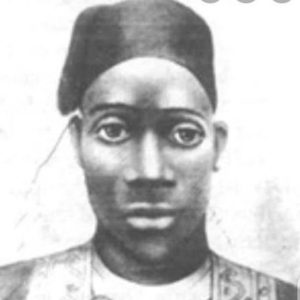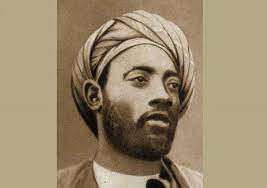Visit Kasubi Tombs In Uganda
The Kasubi tombs, a prominent Buganda cultural site and a UNESCO World Heritage Site in Uganda, serve as the burial sites for the monarchs of the Buganda kingdom.
Kasubi tombs are one of the cultural sites that are taken as cemetery/burial grounds for the kings of Buganda kingdom. It was constructed in the 13th century by Muteesa (i). Kasubi tombs are among the 31 royal tombs or burial grounds displayed in the Buganda kingdom. Some unknown tombs are in Busiro, Kyagwe among other places.
Kasubi tombs are not only important cultural sites for Buganda, Uganda, and Africa as well. The site is of spiritual, cultural, and national value to the country because it’s among national cultural heritage sites in Uganda which are highly visited during a Uganda tour.
Kasubi tombs were declared a UNESCO world heritage site in 2001. Registered as property of Buganda under kabaka (the king). The place is among the sites protected by Uganda laws of 1972. And is one of the most visited places by tourists. Located 5 km away from Kampala city, Kasubi tombs should not miss on your Uganda tour package, especially during the Kampala city tour.
The main tomb is (Muzibu Azaala Mpanga) which houses the kings (kabaka). Its amazing local architecture is built using local materials and it’s the largest grass-roofed building in the country. The tomb was built using bamboo, and wood thatched using grass. It was built with care to make it stand firm in circular sharpness.
The kasubi tombs initially were kabaka Mutesa 1 palace (35th king of Buganda) before it was turned into a tomb at his death in1884. The other kings after Muteesa (I) chose to be buried at Kasubi and also chose not to follow the traditional norm of Buganda kings to be buried at their palaces and decided to be laid to rest at Kasubi tombs.
The tombs are separated into 3 main parts; the first part is the part with the main structure western side that houses the tombs of the four kings. The second part behind the main structure has small graveyards that house prices. And the third part is just farmland.
The wooden gate (Bajjabakula) with a grass-thatched roof and wooden papyrus is the one that welcomes tourists to the site. Traditional guards are at the entrance
The walls of the structure are decorated with black cloth and mats where tourists can sit. The photograph of all four kings can be seen dressed in the skin of the leopard. The leopard was the pet of the 35th Kabaka of Buganda Muteesa (I). When the king died the leopard was difficult to control and it ended up killing several people in the palace. It was later killed and its skin was filled with some things to keep it in its live form. Other notable things to see at the site include the spears, and shields with rings each representing the 52 clans of Buganda. Each clan has a responsible task to perform at the site. The Ngeye clan (Columbus monkey) as their totem is responsible for maintaining the grass thatched roofs looking nice all the time.
History of Buganda kingdom and the kasubi tombs.
To know the cultural importance of Kasubi tombs, one needs to understand the origin and history of the Buganda kingdom and the Buganda people. Buganda king is believed to be one of the tribes of the Bantu ethnic group that migrated from Cameroon highlands to Uganda around 1000 ad. Buganda was one strongest African kingdoms before the colonization of Africa. The king had a rich history and civilization the way back to the 13th century.
Some theories have it that the first Muganda was Kintu and he is believed to be the king of Buganda. Kintu had his wife called Nambi who was given to him by his father-in-law Iguru after impressing him with several deeds.
After the disappearance of Ssekabaka Kintu (history has it that he ascended to heaven). Buganda was ruled by several kings but their names and period are not known because during that there were no civilized people to keep history. It was during the reign of Ssekabaka Ssuna ii that the period and history were recorded.
The kings of Buganda preferred to construct their places on hills within the kingdom to help them get a clear view of their territories and see enemies trying to attack the kingdom.
When these kings die, the traditional way was to remove the jawbone and bury it on one grave site and bury the body on another site. It was believed that the jaw bone contained spirits and in Africa, it’s believed that if someone dies the spirit remains. The deceased king (Kabaka) could come and talk to his successors, and servants. When the successor dies is chosen from the immediate family after burial and the rituals were to be performed to please the dead king before his successor takes over.
The Kings (Kabaka) are buried at Kasubi Tombs.
The Kasubi Tombs in Kampala, Uganda, is the site of the burial grounds for four kabakas and other members of the Baganda royal family. As a result, the site remains an important spiritual and political site for the Baganda people, as well as an important example of traditional architecture. Below are the four (4) kings buried at the tombs.
Kabaka Muteesa (1)

Kabaka Muteesa 1 was the 35th King of Buganda from 1834 to 1884 and the first king to be buried at kasubi tombs. He built his palace at Kasubi where exactly the tombs are located.
Kabaka Mutesa hosted John Speke in1862 the first explorer to visit Buganda and Henry Murton Stanly in 1875. He allowed his servants to convert to Christianity and Islam because it was during his reign that the scramble and part ion of Africa had started but he ensured that they don’t challenge and threaten his authority. Mutesa died in 1884 and was buried at Kasubi Tombs.
Ssekabaka Daniel Mwanga ii

After the burial of Mutesa I, his son Mwanga succeeded him. Mwanga ii reign was not easy for him because his rule was in colonial times and the foreign influence was too high. Mwanga saw these religions and Christianity as a threat to his rule and he decides to kill Muslims and Christians who had converted during his father’s reign.
After the mass killing of his Christians and Muslim servants, His chiefs got concerned and joined forces with foreign people to remove him from authority. Mwanga was forced into exile while there he joined the forces of king Kabalega of Bunyoro to come and fight British colonialists and get back to the throne. Their efforts yielded nothing Mwanga was defeated and exiled to Seychelles where he died in 1903. Due to desperation he changed to Christianity and was named Daniel. His remains were sent back in 1910 and buried at Kasubi tombs.
Ssekabaka Daudi Chwa ii
After Mwanga‘s death, He was succeeded by his 2-year-old son Kabaka Daudi Chwa in 1897. He was being assisted by the Christian regents until he reached the recommendation to rule and decide for the kingdom. His leadership was low-key and was not too strong as the kings before. Daudi Chwa died in 1939 and he was buried at Kasubi tombs thus making the site so important culturally and spiritually.
Fredrick Muteesa II (1939 to 1969)
After Kabaka Daudi Chwa’s death in 1939, he was succeeded by his son Fredrick Walugembe Mutesa ii. Around the 1950s, disagreements between the Kabaka and Sir Andrew Cohen developed and the Kabaka was exiled to England. He returned to Uganda in 1955 and become the first president of the republic of Uganda upon independence in 1962.
Tensions between the president and the strong Prime Minister Milton Obote rose and kabaka’s palace was attacked by a government army led by Gen. Idi Amin. Kabaka Muteesa (ii) escaped and flew to England where he died in 1969. His remains were sent back to Uganda in 1972 and buried at Kasubi tombs.
Facts and challenges of Kasubi tombs
Kasubi tombs are the only UNESCO world heritage site in Kampala city and are being managed by the Buganda kingdom. One of the challenges faced is the problem of shortages of funding. The materials used to construct the site are vulnerable to fire and in 2010 fire gutted the site and burnt down the main tomb “Muzibu azaala mpanga” the house that houses four kings of Buganda. Up to now the cause of the fire is still unknown.
Efforts to reconstruct and restore the tombs started in 2010 but the works have been slowed down by ritual ceremonies that have to be performed by the sitting Kabaka (king). The project was funded by the government of Uganda and the Embassy of Japan. Travelers should request their tour operators to take a 1 day Kampala city tour to experience most of the cultural sites and other attractions located in Kampala city.
Note: Travelers can decide to take a half or full-day Uganda tour to the city before preparing for a wildlife or gorilla safari, or decide to explore the city after the main activity. kampala has a variety of things that are attractive to tourists and taking a city tour to one of them is a memorable experience you shouldn’t miss on your safari experience to Uganda.